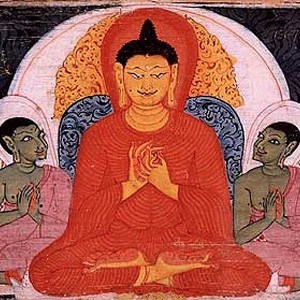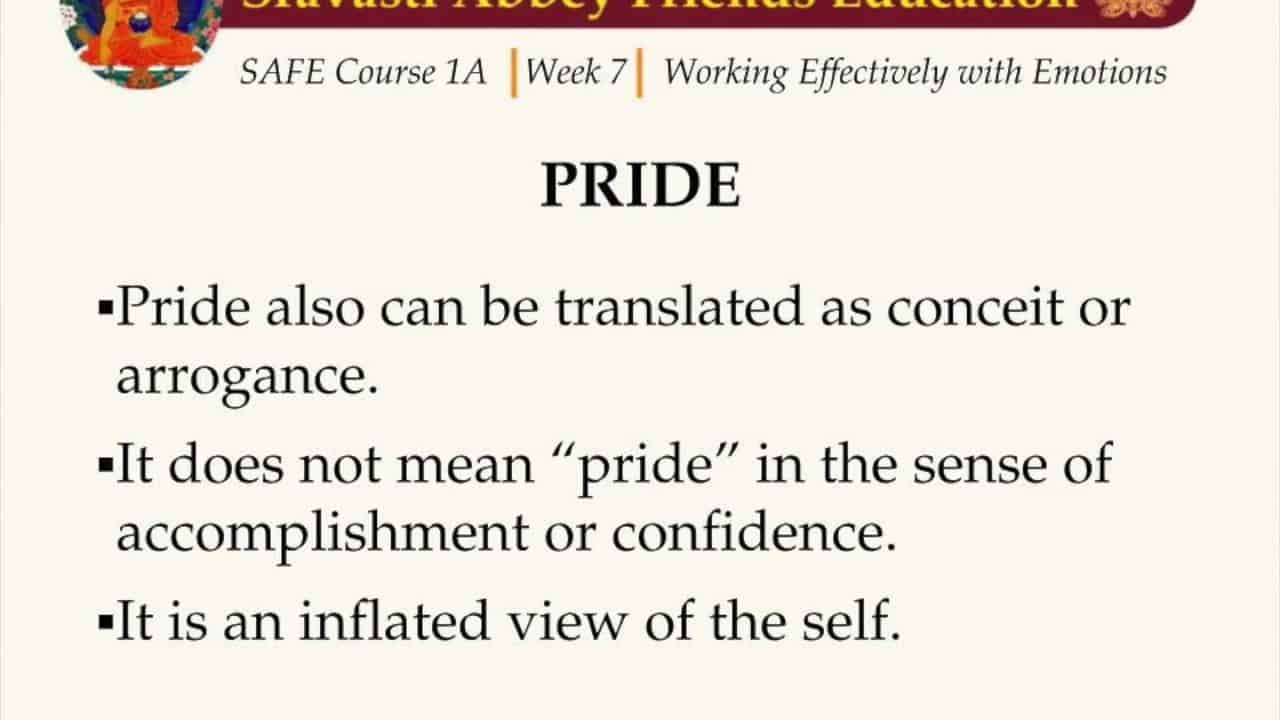The Mind and Life IV conference: Sleeping, dreaming, and dying
Attended by H.H. the Dalai Lama, in Dharamsala, India

The Mind and Life IV dialogue discusses those “marginal states” in which our habitual sense of personal identity is challenged, and in which a host of phenomena of great significance for human existence become intensified or are made manifest.
Note: This report began as a letter to friends. I do not attempt to give a comprehensive report on the conference and refer people to a number of excellent books published by Snow Lion Publications and Wisdom Publications that have come out of the Mind/Life Conferences…
Due to the kindness of a friend who offered my air ticket and the kindness of the conference organizers and participants, I was able to attend the Fourth Mind and Life Conference in Dharamsala in October, 1992. The theme of the conference was “Sleeping, Dreaming and Dying,” and in it, His Holiness the Dalai Lama (HHDL) discussed these subjects with Western scientists and scholars. It’s hard to summarize five full days of presentations and discussions, but I’ll highlight some of the points I found interesting. When I told some friends, “Please be aware that you’re hearing about this through my subjective perceptions,” they responded, “We wouldn’t have it any other way.”
Phenomenon of dreams
The purpose of the conference was to exchange ideas. It was not to show how Buddhism and science were the same or to try to stretch the parallel points between them. I personally enjoyed thinking about dreaming, for example, from a scientific view, with descriptions of REM (rapid eye movement) and physiological measurements; then from a psychoanalytic view, with the interplay between conscious, preconscious and unconscious; and finally from a Buddhist view, with its techniques for transforming dream time so it can be used on the path. These three descriptions were very different, and yet the phenomenon of dreams includes all of them.
Several months ago, His Holiness said in an audience with a group from Singapore that it wasn’t necessary to keep refuting the ancient Indian schools such as Samkya and that he has encouraged the monasteries in the south to study Western philosophy and science and to debate the views found in these disciplines. I cheered inside upon hearing this, and this conference demonstrated again His Holiness’ openness to other views. He is genuinely interested in science and is aware of how some Buddhist “logical” arguments are logical only within a Buddhist setting. And when the scientists asked questions about Buddhist beliefs that he couldn’t explain to their satisfaction, he readily said that those need further investigation. Yet, he is firmly grounded, and at the conclusion of the conference said half jokingly and half seriously, “Each time we meet you scientists have more new information to tell me, while I keep saying the same thing!”
“Self” exploration
The conference began with Charles Taylor, a philosopher, tracing the development of the idea of self in the West. When Plato spoke of self-mastery and of reason commanding one’s soul, he was referring to letting the order of the universe work within oneself. When Augustine spoke of self-exploration, it was in terms of discovering God at one’s core. However, in the last 200 years, the West hasn’t viewed people in relation to the cosmos or to God so much, and the idea has grown of an independent self that controls one’s thoughts and behavior. So on one hand, we believe in self-control and will, which by extension has led to technological advancement and exploitation of the environment, and on the other, we exalt self-exploration, to discover our individualistic and unique way of being human. This helps me understand the particular way self-grasping manifests in those of us who grew up in the West. His Holiness later described at length the Buddhist view of no-self, while at the same time said that even when one realizes this, one still has a valid sense of self.
Sleeping and dreaming
Francisco Varela, a neuroscientist, went on to describe sleeping and dreaming physiologically. The questions arose as to why we sleep and dream. There is no clear understanding of this yet. Scientists used to think that it was to replenish the body, but in REM sleep, when most dreams occur, the body in many ways consumes more energy than when awake. For example, the brain uses more glucose, respiration often increases, etc. So what is being replenished? It seems that in evolution there was a reason for REM sleep—all mammals except anteaters have it and so do birds—but why is still a mystery. Perhaps because dreaming gives us a time to digest the information gathered during the day, to plan, rehearse and rethink things.
Joyce McDougall, a Freudian psychoanalyst, explained that according to that system, dreams arise as a way of handling information arising from the preconscious and unconscious; dreaming resolves the conflict this information presented, thus enabling us to remain asleep, instead of waking up. Thus in Western psychology, dreams are seen as a source of information and are used in therapy to promote mental health. In Buddhism, on the other hand, dreams are generally not given such importance. If one has certain dreams repeatedly, not just once, it may indicate that one’s purification practice is going well, and a few dreams may be prophetic, but in general Buddhism uses common dreams neither as a source of information nor for therapy.
Transforming sleep
Since sleep is a changeable mental factor, explained HHDL, the time we spend sleeping can be made virtuous or non-virtuous. According to paramitayana, sleep is transformed into the path by generating a good motivation or Dharma understanding before falling asleep and then trying to maintain that mental state while asleep. In tantrayana, dream yoga is done in order to develop a special dream body which can be used to practice the path. A special dream body can leave the gross body while the person is asleep, but generally, even though ordinary people may sometimes feel like they have left their bodies while asleep, this is not the case. With the exception of a few rare people who have such a special dream body due to karma, the rest of us need to cultivate it through practice. There are two main ways to do this: either through intention or through tantric methods of working with the subtle winds. HHDL said that practices to develop a special dream body are also found among non-Buddhists and that without much foundation, they can attain them. However, the motivation and aim of a Buddhist is different: it is to realize emptiness in order to be able to benefit others.
Lucid dreaming
Jayne Gackenbach, a psychologist, described lucid dreaming, the process of recognizing one is dreaming while dreaming. A “dream light,” developed by a professor at Stanford, was offered to His Holiness. This has been used to help people become lucid in their dreams. HHDL described some ways that it is done in the Buddhist dream yoga practice, and I think the dream light may be a useful addition. HHDL described the Buddhist practice of dream yoga and the nine mixings found in tantric practice, after going through the four noble truths, emptiness, the various levels of subtle and gross mind, and Dzog Chen all in one afternoon. And these people didn’t even know what refuge was! However, their appreciation of the depth of Buddhist philosophy and practice grew as a result. Many of them were personally affected by the teachings—HHDL planted many seeds.
Death and “self” in science
Pete Engel, a physician, talked about different stages of consciousness such as coma and seizures. He also spoke of the medical causes of life and death, and from this a discussion arose about “What is death?” Doctors speak of the death of an organ. Someone can be brain-dead, or the heart can stop or the breathing cease. But a brain-dead person can be alive on a respirator, and the brain can be alive several minutes after the breathing has stopped. So when does death occur? HHDL brought up an interesting point here: Buddhism speaks of a person, not an organ, dying. And when does life start? Scientists don’t have a definition for consciousness, but they agree that its existence depends on the existence of a nervous system. So is there life in the womb (although there may not be consciousness) before the fetus develops a nervous system? Can subtler levels of mind be measured by scientific instruments either in a fetus or in a meditator who is in the clear light? In previous Mind and Life Conferences, HHDL has said that scientists could measure the EEG of a meditator in the clear light, if they have his/her permission. It’s not clear what one could discover by doing an EEG at this time because EEG is a very gross measurement. This time, when asked if Buddhism could prove the existence of the subtlest clear light, HHDL said that high practitioners who have direct experience of the subtlest clear light don’t need proof because it is their own experience, and it can’t be proven to one who doesn’t have that experience.
Another topic that arose was what is the “self” in science? Many think the self is connected with the brain. Nowadays some people with brain lesions can receive transplants of fetal brain tissue to take the place of their own damaged brain areas. At what point, then, would the person be transplanted?
Dialogue on brain states
Epilepsy has been viewed differently in different cultures. In ancient times it was seen as a gift, while in the Middle Ages it was an affliction from the devil. It seems that many epileptics have mystical experiences: Joan of Arc, Mohammed, and several biblical prophets. Pete asked Dr. Chodak about the Tibetan view of epilepsy. He explained that there is talk of it in medical texts, although it is not extensively discussed. There is Tibetan medicine for it. However, when the medicine isn’t immediately effective, then pujas are done to remove the spirit interference which could be contributing to the seizures.
Oracles and mediums
The topic then arose of oracles and mediums. What is happening? Is the medium having a seizure or is it a genuine trance in which an oracle is present? Pete expressed interest in using an EEG to measure the brain activity while the Nechung oracle was present. Could you imagine an electrode cap in addition to the elaborate headdress he is already wearing?
At this point HHDL made some interesting comments about oracles. Such spirits have more subtle bodies than ours and they may have access to some information that we don’t. However, they are in samsara and have lots of problems. Just as some human beings are honest and some lie, so some spirits tell the truth and others don’t. Just as some humans are kind and some are malevolent, so are some spirits. Therefore, it’s wise to be careful in this regard, although if one can ascertain the integrity of an oracle, that being can be helpful.
Near-death experiences
Joan Halifax, an anthropologist, talked of near-death experiences. There are some experiences reported frequently by people who have nearly died or who have been termed medically dead and then resuscitated. People often speak of seeing their old body from above, going through a dark tunnel, meeting dead friends or relatives, reviewing their life, and meeting a being of light or some spiritual presence. (I’ve subsequently heard that while some adults report meeting Jesus, some teenagers meet Dr. Spock in their near-death experiences!) During the Middle Ages, people also reported near-death experiences, but while modern reports talk of bliss, light and lack of fear, those older reports talk of heaven and hell and encourage people to keep good ethical conduct. The question arose: to what extent are near-death experiences conditioned by the culture of the time? How much of what people report of such experiences is conditioned by the culture and expectations of society? How much are they mental creations?
Joan asked HHDL if people actually entered the intermediate state during near-death experiences and then returned to life. HHDL responded that once one enters the intermediate state, there is no going back to the former body. Even if one has gotten as far as the clear light of death, unless one is a skilled tantric practitioner, it is difficult to come back to the gross levels of consciousness of this life. These people may have experienced a similitude of the clear light, but not the actual clear light of death. He told the story of someone who died at the time of Milarepa and later the body came alive again. Milarepa told the people that it was a spirit who had entered the corpse, it wasn’t the mind of the person who had died. HHDL also commented that we need to check up reports of out-of-body experiences during near-death experiences, for it is difficult to determine what happened and what is one’s imagination. As in the previous discussions about feeling like one has left the body while asleep or meeting special people or receiving special messages in dreams, HHDL maintained an open yet critical attitude. We can’t deny people’s feelings and subjective perceptions, but we must research and check up to determine what happened and what is merely appearance to the mind or imagination. HHDL also clarified that the detailed descriptions of deities in the Bardo Thodol (Tibetan Book of the Dead) are for practitioners of this specific Nyingma practice. Other people in the intermediate state wouldn’t have those same appearances or experiences.
H.H. the Dalai Lama
During the conference HHDL clarified some philosophical points I had been wondering about. However, some of his other comments affected me on a deeper level. One was his opening statement at the conference: what is important in life is compassion and humility. Another was his comment that all Buddha’s teachings were given for the happiness of sentient beings. How incredible, I thought, sitting in this room full of Western scientists and scholars, an entire discipline exists simply for the benefit of beings, to bring happiness to others.
Venerable Thubten Chodron
Venerable Chodron emphasizes the practical application of Buddha’s teachings in our daily lives and is especially skilled at explaining them in ways easily understood and practiced by Westerners. She is well known for her warm, humorous, and lucid teachings. She was ordained as a Buddhist nun in 1977 by Kyabje Ling Rinpoche in Dharamsala, India, and in 1986 she received bhikshuni (full) ordination in Taiwan. Read her full bio.


